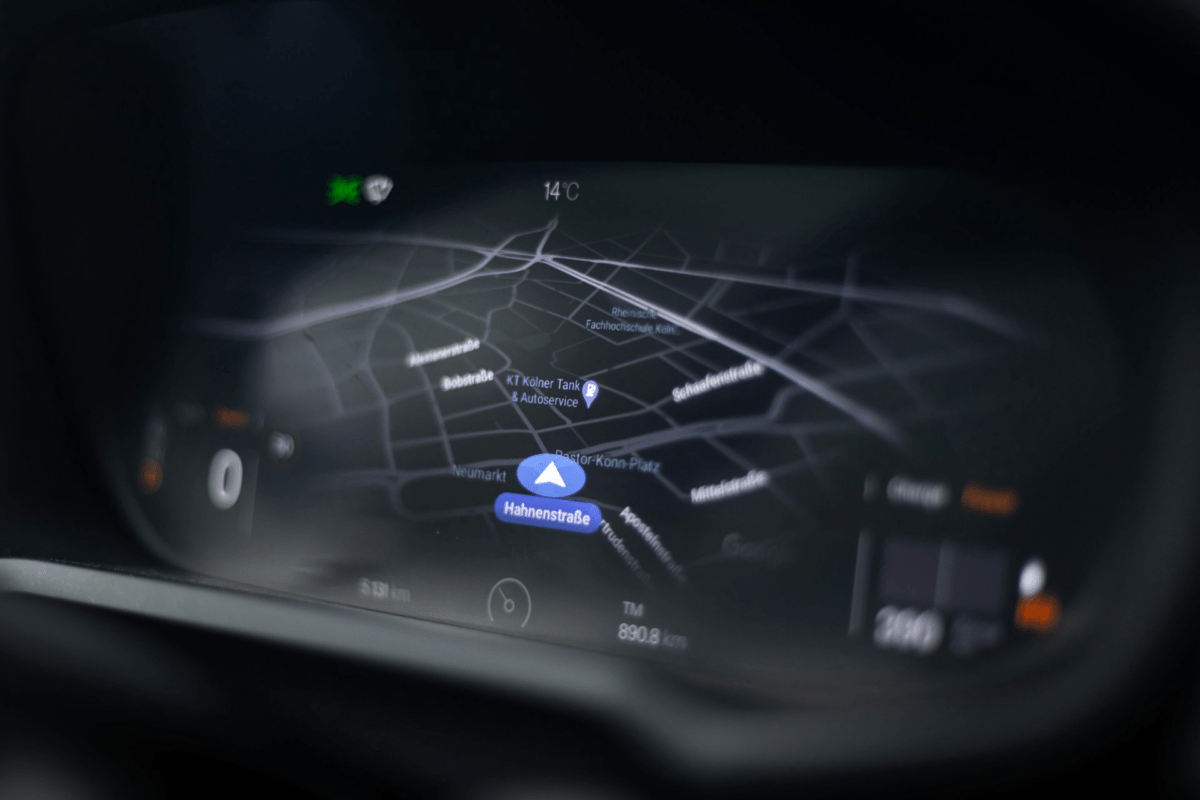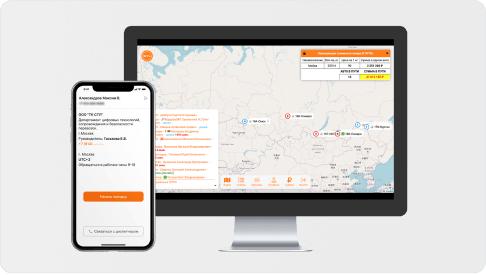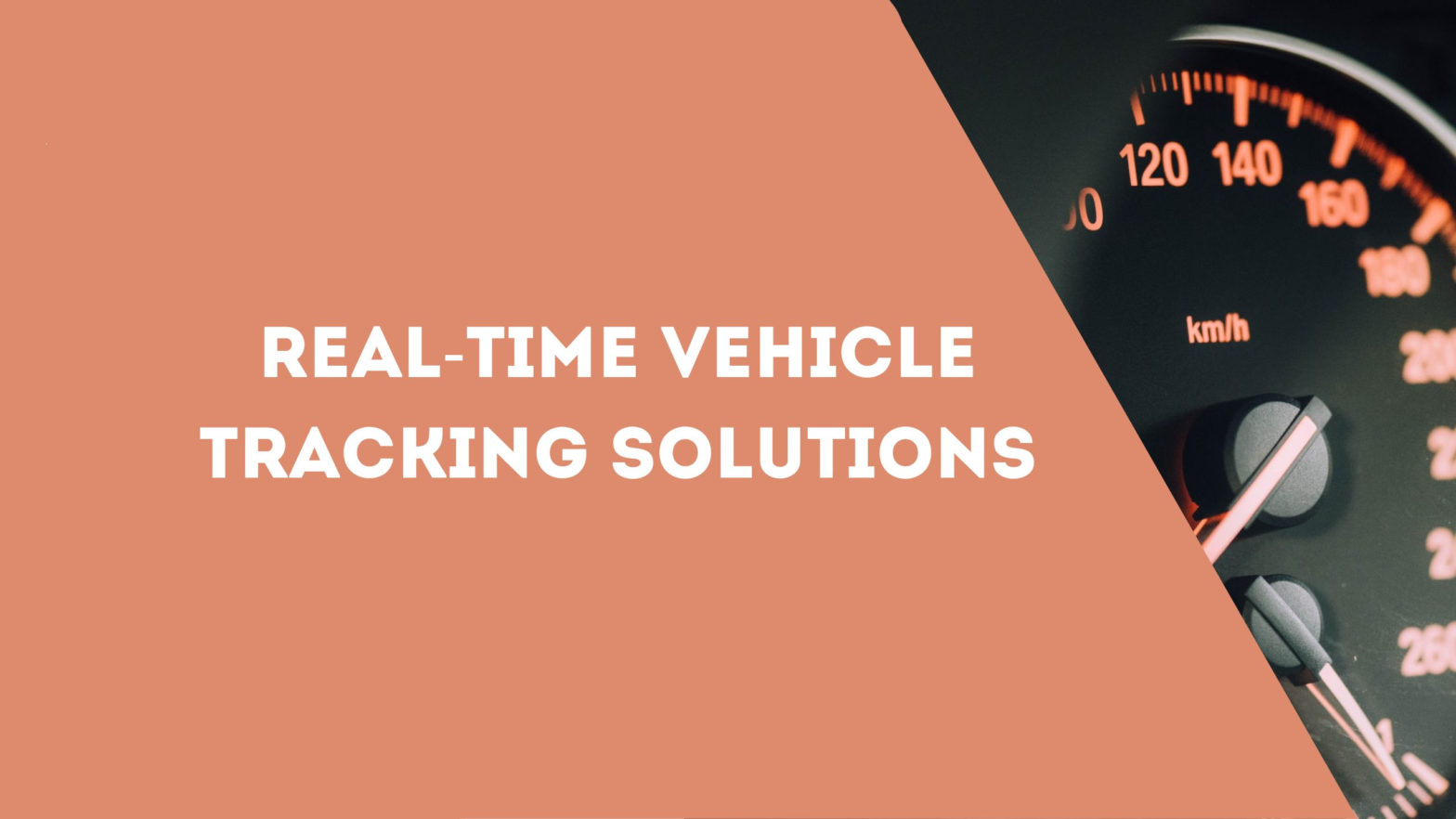Foundational Insights: The Revolution in Fleet Management
In 2024, the realm of vehicle tracking solutions has witnessed a transformative leap with the advent of advanced GPS fleet tracking solutions. These systems have become pivotal for fleet managers, offering a comprehensive view of vehicle operations and health. The evolution from basic tracking devices to sophisticated fleet tracking software marks a significant technological advancement, improving operational efficiency and driver safety.
Impact on Fleet Management and Industries
Today’s GPS vehicle tracking solutions provide real-time monitoring of entire fleets, delivering essential data on vehicle locations, fuel consumption, and vehicle diagnostics. This evolution has fostered a proactive approach in vehicle maintenance, ensuring the longevity and reliability of fleet vehicles. The integration of these technologies goes beyond mere location tracking; modern vehicle tracking solutions, equipped with advanced analytics, optimize fuel usage, reduce costs, and minimize environmental impact. The incorporation of electronic logging devices (ELDs) ensures regulatory compliance, highlighting the importance of these systems in the transportation sector.
Enhancing Driver Safety and Operational Efficiency
Real-time transportation tracking has significantly improved driver safety by monitoring harsh driving events and providing feedback through driver safety scorecards. This not only protects drivers but also contributes to overall road safety. In summary, the current state of real-time transportation tracking represents a blend of technology and practicality, offering comprehensive fleet management solutions that drive cost savings, enhance fleet performance, and ensure the safety of drivers and vehicles. The ongoing innovation in GPS tracking software continues to reshape fleet management, solidifying its role in modern business operations.
Telematics’ Role in Modernizing Fleet Management

Understanding Fleet Telematics in Transportation Tracking
Telematics, a blend of telecommunications and informatics, has become a cornerstone in modern fleet management. It involves the use of GPS fleet tracking solutions and various communication technologies to monitor and manage fleet vehicles. Telematics systems collect a wealth of data, including vehicle location, fuel usage, and vehicle diagnostics, providing fleet managers with real-time insights into their fleet’s performance.
Key Components of Telematics Systems
GPS Tracking: The core of telematics, GPS tracking devices pinpoint the exact location of vehicles, offering continuous monitoring of fleet movements.
Data Transmission: Information collected by the GPS tracking device is transmitted to a central fleet management platform, often via cellular networks.
Vehicle Diagnostics: Modern telematics systems connect to a vehicle’s OBD II port, gathering detailed data on vehicle health and performance.
Driver Behavior Monitoring: Telematics systems track driving patterns, identifying harsh driving events and helping to improve driver safety.
Integration in Transport and Forwarding
In the transport and forwarding sector, telematics plays a pivotal role. It enables companies to streamline their operations, enhance vehicle maintenance, and ensure timely deliveries. By leveraging GPS fleet tracking software, businesses can optimize routes, reduce fuel consumption, and minimize idle times, leading to significant cost savings.
Innovations in Telematics for Fleet Tracking
Advanced Analytics: Telematics systems now incorporate sophisticated analytics to process fleet data, offering actionable insights for fleet managers.
Real-Time Alerts: Fleet managers receive instant notifications about critical events, such as unauthorized vehicle usage or deviations from planned routes.
Fuel Management: Telematics aids in monitoring fuel usage, helping to identify areas where fuel consumption can be reduced.
Asset Tracking: Beyond vehicles, telematics is used for tracking other assets, ensuring their security and efficient utilization.
Enhancing Fleet Management with Telematics
Telematics has transformed fleet management into a data-driven field. Fleet managers can now:
Monitor the entire fleet in real-time, ensuring efficiency.
Make informed decisions based on accurate data.
Implement proactive vehicle maintenance, reducing downtime and extending vehicle lifespan.
Ensure compliance with regulations, such as the use of ELDs for hours-of-service monitoring.
The Future of Telematics in Transportation Tracking
As telematics technology continues to evolve, we can expect even more advanced features and capabilities. Integration with artificial intelligence and machine learning will further enhance predictive analytics, enabling fleet managers to anticipate and address potential issues before they arise. The future of telematics in vehicle tracking solutions looks promising, with continuous innovation driving the industry towards greater efficiency, safety, and sustainability.
Intelligent Vehicle Monitoring: GPS and Cloud Computing

Revolutionizing GPS Fleet Tracking Software with GPS and Cloud Computing
The integration of GPS fleet tracking software and cloud computing has revolutionized the way fleet vehicles are monitored and managed. This synergy has led to the development of advanced vehicle tracking solutions, providing fleet managers with real-time data and insights into their entire fleet.
GPS Fleet Tracking: The Core of Modern Vehicle Tracking Solutions
Real-Time Location Tracking: GPS technology enables precise tracking of vehicle locations, essential for efficient fleet management.
Route Optimization: By analyzing GPS data, fleet tracking software can suggest optimal routes, reducing travel time and fuel costs.
Vehicle Recovery: In case of theft or loss, trackers facilitate quick recovery of fleet vehicles.
Cloud Computing: Enhancing Data Management and Accessibility
Centralized Data Storage: Cloud computing provides a centralized platform for storing and managing vast amounts of data.
Scalability and Flexibility: Cloud-based fleet management platforms can easily scale to accommodate growing fleet sizes and data needs.
Remote Access: Fleet managers can access data from anywhere, using mobile apps or web interfaces, enhancing decision-making and response times.
Safety and Efficiency: The Dual Benefits of GPS and Cloud Computing
Enhanced Driver Safety: GPS fleet tracking solutions monitor driving behavior, identifying risky practices and helping to improve driver safety.
Efficient Operations: Real-time data allows for better coordination and utilization of fleet vehicles, leading to increased efficiency.
Reduced Fuel Costs: By optimizing routes and monitoring fuel usage, GPS and cloud-based systems help in reducing costs and improving fuel efficiency.
The Role of Sensors in Comprehensive Vehicle Data Collection
Monitor Vehicle Status: Sensors connected to a vehicle’s diagnostic system provide valuable data on vehicle status, enabling proactive maintenance.
Environmental Monitoring: Sensors can track environmental factors like temperature and humidity, crucial for transporting sensitive goods.
Asset Tracking: Beyond vehicles, sensors are used for tracking other assets, ensuring their security and efficient utilization.
Fleet Tracking Software: The Hub of Intelligent Vehicle Monitoring
Data Integration and Analysis: Fleet tracking software integrates data from GPS trackers, sensors, and cloud platforms, offering comprehensive analytics and insights.
Customizable Alerts and Notifications: Fleet managers receive customized alerts for events like unauthorized vehicle usage, maintenance reminders, or deviations from planned routes.
Compliance Management: The software helps in ensuring compliance with regulations, such as the use of ELDs for hours-of-service monitoring.
The Future of Fleet Management: GPS and Cloud Computing Synergy
The combination of GPS fleet tracking and cloud computing is set to continue driving innovation in fleet management. Future advancements may include more sophisticated AI-driven analytics, enhanced predictive maintenance capabilities, and greater integration with other business systems. This technological synergy promises to further streamline operations, save costs, and elevate the standards of safety and efficiency in fleet management.
Business Productivity and Profit Enhancement through Transportation Tracking

Maximizing Business Potential with GPS Fleet Tracking
In the dynamic world of business operations, GPS fleet tracking has emerged as a key driver of productivity and profitability. By leveraging advanced vehicle tracking solutions, companies can significantly enhance their fleet performance, leading to substantial cost savings and operational improvements.
The Role of GPS Fleet Tracking Software in Operational Efficiency
Real-Time Fleet Monitoring: GPS fleet tracking solution provides real-time visibility of fleet vehicles, enabling efficient management and deployment.
Route Optimization: By optimizing routes, GPS tracking systems reduce travel time and fuel consumption, contributing to lower operational costs.
Vehicle Maintenance: Proactive monitoring of vehicle diagnostics and engine fault codes helps in timely maintenance, reducing downtime and maintenance costs.
Enhancing Fleet Tracking with Advanced Features
Driver Behavior Analysis: Fleet tracking software analyzes driver data, including vehicle speed and driving patterns, to improve safety and reduce the risk of accidents.
Asset Management: Beyond vehicles, GPS tracking extends to asset tracking, ensuring the security and efficient utilization of all business assets.
Compliance and Reporting: Integration with ELDs and other compliance tools ensures adherence to regulatory standards.
Addressing Challenges in Fleet Management
Vehicle Utilization: GPS tracking solutions provide insights into car usage, helping businesses maximize the utilization of their fleet.
Cost Management: By monitoring fuel usage and identifying areas for improvement, GPS tracking systems help businesses save money on fuel and other operational expenses.
Scalability and Flexibility: Cloud-based fleet management platforms offer scalability, accommodating the growing needs of businesses.
Fleet Tracking Software: A Comprehensive Solution
Customizable Alerts: Fleet managers receive tailored alerts for critical events, such as unauthorized vehicle use or deviations from planned routes.
Data-Driven Decisions: Access to comprehensive data enables informed decision-making, improving business operations and fleet efficiency.
Driver Coaching and Training: Insights from tracking data can be used for driver coaching, enhancing overall fleet performance.
Scrile’s Contribution to Real-Time Transportation Tracking: The Driver Tracking App Case Study

Innovating Transportation with Scrile’s GPS Fleet Tracking Solution
Scrile has made a significant impact in the transportation and logistics industry with its innovative GPS fleet tracking software. The company’s expertise in developing user-centric solutions has led to the creation of a state-of-the-art transportation tracking system, revolutionizing the way couriers and truck drivers are monitored and managed. To gain deeper insights into the practical applications and success stories of these advancements, we invite you to read our detailed case study available on the dedicated page: Driver tracking app: two months from idea to launch.
STL Traffic Project: A Milestone in Fleet Tracking
The STL Traffic project stands as a testament to Scrile’s capabilities in GPS vehicle tracking solutions. This project involved the development of a real-time monitoring and management system designed to track couriers, specifically truck drivers, across Russia. The system provided a comprehensive solution for tracking vehicle location and monitoring courier activities.
Addressing Key Challenges in Real-Time Courier Tracking
Real-Time Monitoring: Scrile developed an application enabling couriers to update their status and location in real-time. This feature allowed administrators to view all drivers on a single map, offering a complete overview of the fleet’s activities.
Courier Information Management: The system included functionalities for administrators to view, edit, and manage courier profiles and statuses, ensuring efficient fleet management.
Technical Implementation: Scrile overcame various technical challenges, including application design, server-side notifications, and map integrations, to deliver a robust tracking system.
Tools and Technologies: Powering the Tracking System
Development Languages: Objective-C, Java, TypeScript
Framework: React Native
Database: MongoDB
Development Environments: Node.js, Xcode, Visual Studio Code These tools and technologies were instrumental in creating a flexible and efficient GPS fleet tracking system.
Project Outcome: Setting New Standards in Fleet Management
The collaboration with STL Traffic marked a successful transition from concept to a fully functional real-time courier tracking system. Scrile’s approach to user-centric design and adaptability to operational needs played a crucial role in the project’s success.
Impact on STL Traffic: Enhancing Fleet Operations
The implementation of Scrile’s GPS fleet tracking solution set a new standard in real-time courier management. The system significantly enhanced operational oversight, ensuring timely deliveries, and improving communication efficiency. By leveraging key features of the tracking platform, STL Traffic was able to save money and improve business operations, demonstrating the effectiveness of Scrile’s fleet management solutions.
In conclusion, Scrile’s driver tracking app case study highlights the company’s prowess in delivering advanced GPS fleet tracking software that meets the dynamic needs of the transportation industry. The project’s success underscores the importance of innovative vehicle tracking solutions in enhancing fleet tracking, management, and efficiency.

Key Features and Technologies in Transportation Tracking
Essential Features of Modern Transportation Tracking Systems
The landscape of Automobiletracking solutions has evolved significantly, incorporating a range of features that enhance the management and efficiency of operations. These features are integral to modern GPS fleet tracking software and systems, providing comprehensive insights into fleet activities.
Real-Time Location Tracking: The cornerstone of any transportation tracking platform, this feature ensures continuous monitoring of vehicle locations, enabling fleet managers to make timely decisions.
Geofencing and Alerts: Geofencing allows managers to set predefined boundaries for vehicles, with alerts triggered when vehicles enter or exit these areas.
Route Optimization: Advanced algorithms analyze various factors to suggest the most efficient routes, reducing travel time and costs.
Vehicle Health Monitoring: Systems are equipped to monitor vehicle health, alerting managers to potential issues before they escalate.
Driver Behavior Analysis: Fleet management software can assess driver performance, including speed, braking patterns, and adherence to routes, contributing to safer operations.
Role of Advanced Technologies in Transportation Tracking
GPS Technology: The backbone of fleet tracking, GPS technology provides accurate and reliable location data for each tracked vehicle.
Artificial Intelligence (AI): AI plays a pivotal role in analyzing vast amounts of data, offering predictive insights and automating complex tasks.
Cloud Services: A cloud-based fleet management platform offers scalability, data security, and remote access to fleet data, enhancing efficiency.
Plug and Play Devices: These easy-to-install GPS trackers offer convenience and flexibility, making them ideal for diverse fleet sizes and types.
Hardwired Tracking Devices: For permanent installation, these devices offer robust tracking capabilities and are often used for larger commercial fleets.
Integrating Technologies for Comprehensive Fleet Management
The integration of these technologies into a single fleet management solution offers a holistic approach to transportation tracking. Fleet management software that combines GPS fleet tracking software, AI analytics, and cloud services provides a powerful tool for managing every aspect of operations. This integration allows for:
Enhanced Data Accuracy: Reliable and precise data on vehicle location, driver location, and vehicle tracker status.
Improved Decision Making: AI-driven insights enable fleet managers to make informed decisions, improving overall fleet performance.
Increased Efficiency: Real-time data and predictive analytics help optimize routes, reduce idle times, and manage maintenance schedules effectively.
In conclusion, the key features and technologies in modern vehicle tracking solutions represent a significant advancement in management. By leveraging GPS technology, AI, cloud services, and innovative devices, businesses can achieve greater control over their fleets, ensuring safety, efficiency, and cost-effectiveness in their operations.
Enhancing Driver Safety with Real-Time Transportation Tracking

Prioritizing Driver Safety in Fleet Management
In the realm of fleet administration management, driver safety is paramount. Real-time transportation tracking, powered by advanced GPS fleet tracking software, plays a crucial role in ensuring the safety of drivers on the road. By providing managers with immediate access to vehicle and driver data, these systems contribute significantly to safer driving practices and overall road safety.
Monitoring for Safer Driving Practices
GPS fleet tracking systems are instrumental in monitoring key aspects of drivers’ behavior. These include:
Speed Monitoring: Tracking vehicle speed to ensure drivers adhere to speed limits.
Harsh Braking Detection: Identifying instances of harsh braking, which may indicate risky driving behaviors or potential hazards.
Traffic Rule Adherence: Ensuring drivers comply with traffic regulations to reduce the risk of accidents.
Implementing Safety Scorecards and Custom Alerts
Safety Scorecards: These tools assess driver performance, highlighting areas for improvement and encouraging safer driving habits.
Custom Alerts: Managers receive alerts for any deviations from safe driving practices, allowing for immediate corrective action.
Impact of Real-Time Tracking on Fleet Safety
Real-time tracking systems have a profound impact on safety by:
Reducing Accident Risks: Continuous monitoring leads to safer driving behaviors, thereby decreasing the likelihood of accidents.
Enhancing Road Safety: Improved driver practices contribute to overall road safety for all road users.
Role in Driver Training and Coaching
Data collected from GPS devices and fleet administration management platforms are invaluable for driver training programs. They provide objective insights into driving habits, facilitating targeted coaching and training to improve driving skills and decision-making.
Assisting Compliance with Transportation Regulations
GPS fleet tracking systems, including plug-and-play and hardwired devices, aid in complying with transportation regulations. They ensure adherence to hours of service rules, as monitored by an electronic logging device, enhancing the overall safety and compliance of fleet operations.
In summary, real-time fleet management software is essential for enhancing driver safety within fleet management. By monitoring driver behavior, implementing safety scorecards, and ensuring regulatory compliance, these systems play a vital role in promoting safer driving practices and reducing accident risks on the road.
Challenges and Future Directions in Transportation Tracking

Overcoming Obstacles in Fleet Monitoring Systems
The domain of fleet monitoring, while technologically advanced, confronts several hurdles that influence its efficiency and widespread adoption. Tackling these obstacles is essential for the ongoing progress of fleet monitoring solutions.
Ensuring Data Security and Privacy: With fleet administration management platforms gathering extensive data, safeguarding this information’s security and privacy is crucial.
System Integration Challenges: Achieving seamless integration of fleet monitoring devices with current fleet administration management applications and hardware is a significant hurdle.
Affordability and Accessibility: The expense associated with deploying sophisticated monitoring solutions can be a barrier for smaller businesses, affecting their accessibility.
Dependability and Precision: Maintaining the dependability and precision of GPS devices and monitoring equipment is vital for effective management of fleets.
Anticipating Future Developments in Fleet Monitoring
The trajectory of fleet monitoring is set for substantial growth, fueled by technological advancements and evolving industry requirements.
Artificial Intelligence and Machine Learning: Incorporating AI and machine learning will refine predictive analysis, providing more precise and actionable insights.
Internet of Things (IoT) Integration: An increased presence of IoT and connected devices will offer real-time data, enhancing monitoring capabilities.
Enhanced Data Analysis: Improved analytical tools will enable more complex analysis of fleet efficiency, driver conduct, and vehicle condition.
Adaptation to New Vehicle Technologies: The emergence of autonomous and electric vehicles will introduce new aspects to fleet monitoring, necessitating adjustments in existing systems.
User-Friendly Solutions: The development of more accessible, user-friendly monitoring devices will facilitate easier adoption across various fleet sizes.
Customization and Scalability: Future monitoring systems will be more adaptable and scalable, meeting the specific needs of diverse industries and fleet sizes.
Moving Forward with Fleet Monitoring Innovations
As the sector addresses these challenges and innovations, the future of fleet monitoring appears bright. With ongoing advancements in technology, fleet management platforms and monitoring solutions will become more effective, secure, and user-friendly. These developments will not only improve operations but also contribute to broader objectives such as sustainability, safety, and efficiency. The evolution of fleet monitoring is poised to redefine fleet administration management standards, solidifying its role as an essential tool for businesses globally.
Conclusion

Summarizing the Evolution of Fleet Monitoring
The journey through the advancements in fleet monitoring services in 2024 has highlighted significant developments and the pivotal role these systems play in modern fleet management. From the integration of GPS technology in fleet tracking services to the innovative solutions provided by companies like Scrile, the industry has seen remarkable growth and transformation.
The Role of GPS Technology: GPS-based fleet tracking services have become essential in providing real-time data on operations, enhancing the management and safety of fleets.
Innovations in Fleet Monitoring: Advancements in AI, cloud computing, and IoT have significantly improved the capabilities of fleet tracking platforms, offering more accurate and comprehensive data analysis.
Challenges and Future Directions: While facing challenges such as data security and system integration, the future of fleet monitoring looks promising with the potential for further technological innovations.
Final Thoughts on Fleet Monitoring Services in 2024
As we conclude, it’s evident that fleet monitoring services have become indispensable in the realm of fleet administration management. The integration of advanced technologies like plug-and-play devices and sophisticated tracking devices has not only streamlined operations but also contributed to enhanced safety and efficiency. The evolution of these services in 2024 marks a new era in fleet administration management. Technology and innovation continue to drive progress and redefine industry standards. Looking ahead, the continued growth and adaptation of fleet monitoring services will undoubtedly play a crucial role in shaping the future of transportation and logistics.
FAQ
What are the benefits of using a fleet administration management platform?
A fleet administration management platform offers comprehensive tools for monitoring and managing operations. It enhances efficiency by providing real-time updates, optimizing routes, and facilitating maintenance scheduling. This platform is essential for improving overall fleet performance and reducing operational costs.
How does a fleet tracking system improve operations?
A fleet tracking system provides real-time visibility of fleet cars, enabling better coordination and management. It helps in route optimization, monitoring vehicle conditions, and ensuring timely maintenance. This system is crucial for maintaining high operational standards and ensuring car safety.
What is the purpose of a GPS tracker in fleet administration management?
A tracker is a vehicle tracking device and a key component in fleet administration management, used to pinpoint the exact location of vehicles. It aids in route planning, monitoring drivers’ behavior, and ensuring asset security. Trackers are vital for maintaining real-time oversight and enhancing the efficiency of operations.
Read also
How to Transcribe Video to Text
Learn how to convert video content into text efficiently using various tools and techniques to improve accessibility and content management.
How to Create a Telegram Bot: A Step-by-Step Guide
Discover the process of creating a Telegram bot, from setting up the environment to deploying your bot and integrating it with various functionalities.
How to Create an NFT-Based OnlyFans Clone
Explore the steps to develop an OnlyFans clone using NFTs, including the technical requirements, platform setup, and blockchain integration.
Integrating Crypto Payments: A Comprehensive Guide
Learn how to integrate cryptocurrency payments into your platform, enhancing security, and offering new payment options to your users.
Driver Tracking: Key Features and Benefits
Understand the importance of driver tracking systems, including their key features, benefits, and impact on operational efficiency and safety.
